AdvocacyToolkit

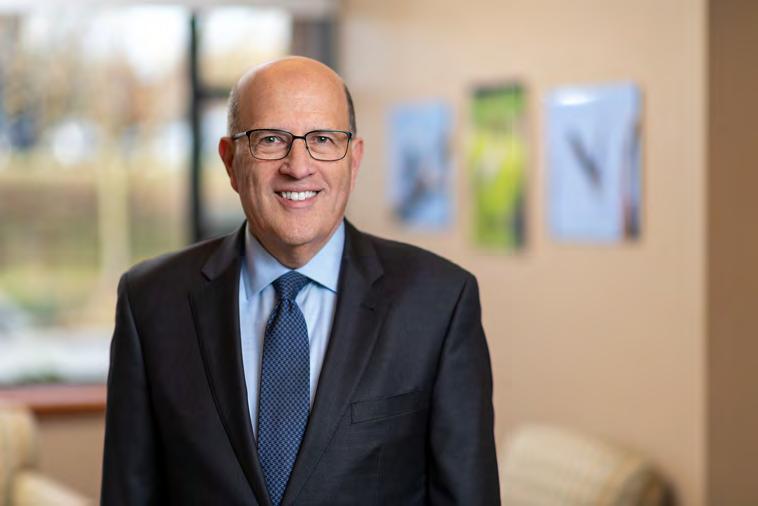



Over the past three years, Maryland hospitals have cared for their communities like never before.
Now, as we look to the future and the preservation of our mission of hope and healing, we are focused on building a better Maryland—for our patients, our dedicated employees, and our vital hospitals and health systems.
As the Maryland Hospital Association and your local hospital advocate for policies in Annapolis during the 2023 session of the Maryland General Assembly, we appreciate you lending your voice and your time to advance key priorities.
The policies we support re ect the values of your hospitals and your communities. We appreciate your commitment and look forward to partnering together to advocate for a healthier Maryland.
Together, we are #Caring4Md.
Sincerely,

“We are focused on building a better Maryland.”
The Maryland Hospital Association (MHA) is the chief advocate for Maryland’s hospitals, health systems, communities, and patients before legislative and regulatory bodies.
MHA evaluates, prioritizes, and recommends changes to Maryland’s health care legislative structure to enable hospitals to better serve their communities’ needs. And, while we represent a uni ed voice for Maryland hospitals in the (partially virtual) policy-making halls in Annapolis, there is no replacement for the voices of individual hospital workers who are on the front lines, the patients they care for, and the community members they partner with. This toolkit is a reference for making your voice heard.

MHA members identi ed several key priorities to strengthen the hospital workforce, support access to care, and improve Maryland’s medical liability climate. MHA’s key 2023 legislative priorities for a better Maryland are:
Provide incentives to grow health workforce and faculty pipeline
Improve licensing process for health care practitioners
Establish state accountability for health workforce
Improve the behavioral health system of care
Protect access to telehealth services
Expand health care coverage and a ordability for all Marylanders
IMPROVE MARYLAND’S MEDICAL LIABILITY ENVIRONMENT
Address in ated life care plans
Create excess insurance pool
Limit attorneys’ contingency fees
FROM THE DAILY RECORD
How did we get here?
Inside Maryland’s dire nursing shortage
October 28, 2021
“I’ve been in health care leadership since 2000 and been through a lot of cyclic shortages in my career, and I think this one is going to challenge the industry more than any other previous nursing shortage we’ve had.”
LESLIE SIMMONS CHIEF OPERATING OFFICER & EXECUTIVE VICE PRESIDENT LIFEBRIDGE HEALTH
Getting right what other states are getting wrong.
Maryland, under the Total Cost of Care Model, is the only state that holds hospitals accountable for the health of their community. Maryland hospitals invest in keeping communities healthy, thanks to the Maryland Model. Hospitals invest money outside their walls, so people do not have to come in. This focus on the health of the community allows hospitals to collaborate more, better utilizing their resources for their neighbors.
Marylanders receive the best health care—no matter where you live, no matter who you are, no matter what your income is. Our rate-setting system ensures everyone pays the same and spares Marylanders from cost-shifting and a two-tiered system of care that burdens patients and worsens outcomes in other states. The Maryland Model de nes success—not only in equitable access, but also in equitable outcomes.
Hospitals in Maryland do not set the prices, and they are not paid more to do more. Through the Maryland Model, hospitals are given a set budget to keep their communities well. The Maryland Model focuses on quality and the value of care, not quantity or patient volume.
Maryland is holding down the total cost of care.
Compared to the rest of the nation:
(2013 to 2019)
HOSPITAL SPENDING PER BENEFICIARY
Maryland hospitals decreased spending by 1.2%
U.S. hospitals increased spending by 6.6%
ADMISSIONS PER 1,000 BENEFICIARIES
Maryland hospitals decreased admissions by 21.3%
U.S. hospitals decreased admissions by 10.3%
MORTALITY RATE
Maryland hospitals lowered the mortality rate by 17.3%
U.S. hospitals lowered the mortality rate by 11.5%
To amplify the special relationships Maryland hospitals have with our patients and our community, we are looking to use the stories and voices of employees, patients and community members on social media, in newsletters, letters-to-the-editor, op-eds and emails, and possibly testimony before committees of the General Assembly.
It takes partnership to make our hospital strong, and it will take everybody to advocate for the policies that help our hospital continue to be an integral part of the community you serve.
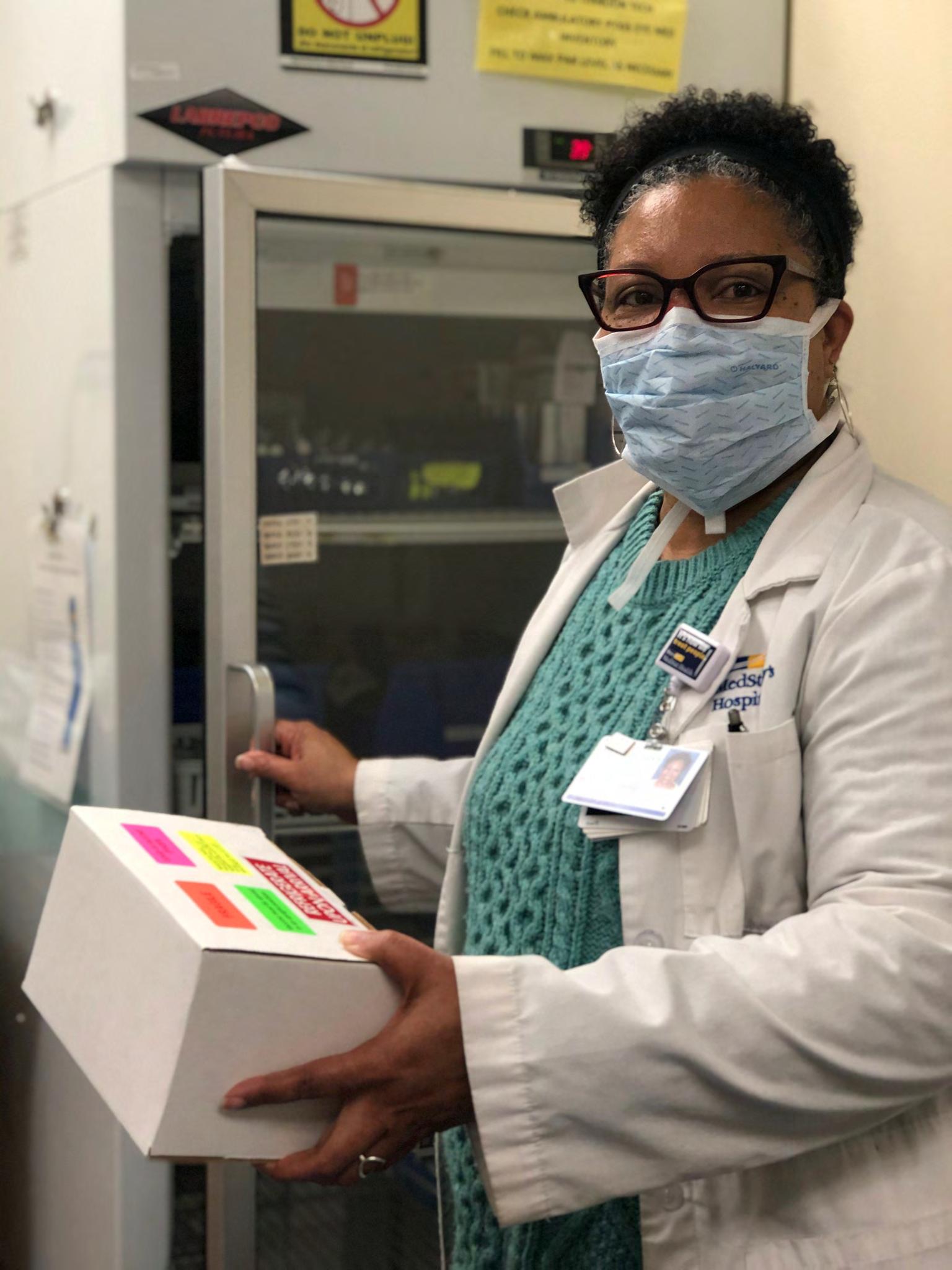
Elected o cials need to hear from the people in their districts. They can’t be experts on everything, so it’s incumbent on us to help them understand the issues facing Maryland hospitals. Visit mgaleg.maryland.gov to nd the contact information for the elected o cials in the state. If you don’t know who your representatives are, there’s an easy way to search via Ujoin by simply entering your address (page 12). Don’t forget that you may have a di erent representative for your hospital and your home.
There are several ways to communicate with your legislators, including calling or emailing, visiting with them virtually, or attending meetings in the district. Don’t forget, legislators are just like you—they have families and jobs and volunteer at local organizations.
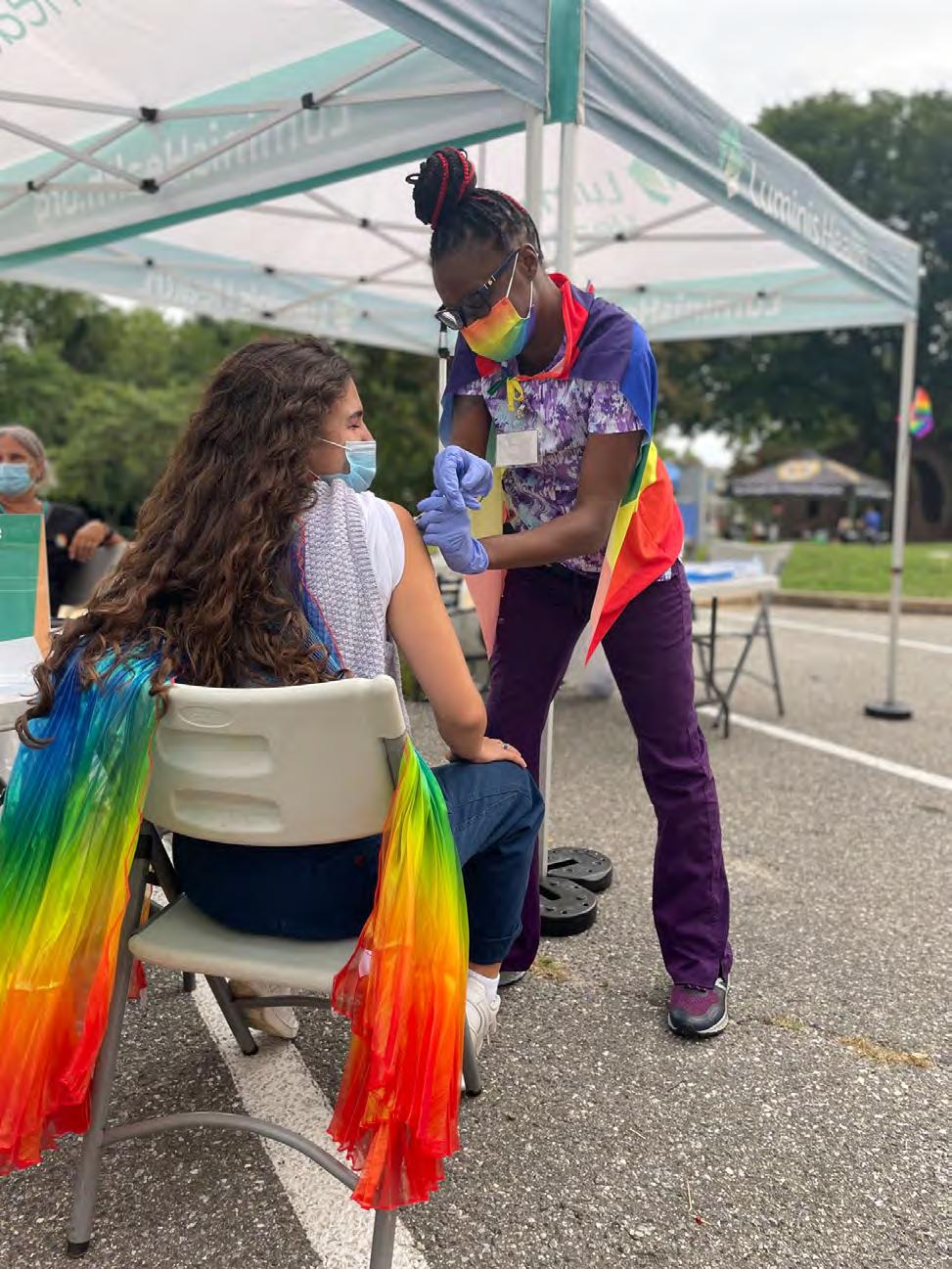
HELPFUL TIPS:
• Relax
• Make it personal
• Get to the point
• Ask for their support
• Leave your contact information
•
O er to be a resource on Maryland hospitals
The following script illustrates how to correspond by phone with members of the Maryland General Assembly’s sta . When you are asked to call regarding speci c pieces of legislation, the Maryland Hospital Association can provide you with the necessary details and a sample script.
Note: It is critical to build good relationships and communicate e ectively with legislative sta —the people who support lawmakers—as they brief elected o cials about an issue and advise on what their position should be.
Hello, I am a constituent of [insert legislator’s name] .
My name is [insert name] , and I live at [full address] and work at [if hospital employee or clinician, name the hospital] .
I’m calling to urge the Senator/Delegate to support/oppose [name of the bill or speci c issue] because [brie y tell your personal story]
Please respond to me by email at [your email address] or by phone at [insert phone number] to explain how you plan to address this matter.
Thank you for your attention.
All of Maryland’s acute care hospitals delivering high-quality health care and improving the health of all Marylanders.
Honorable Chair and Vice Chair _________
[Committee Name]
Address
City, State, Zip
[Bill Number-Title]
Position: Support
Dear [Chair and Members of the Committee]:
I’m writing to you today in support of HB123/SB3, the Preserve Telehealth Access Act of 2021. [Insert personal information, where you live, where you work, why this is important to you.]
letter illustrates an example of how to correspond with members of the Maryland General Assembly.
The following is an example of written testimony from MHA. Adding facts, references, and details about a bill’s speci c impact strengthen written testimony.
When you are asked to write regarding speci c legislation, the Maryland Hospital Association can provide you with the necessary details and a sample reference letter.
If you intend to write regarding speci c legislation, the Maryland Hospital Association can provide you with the necessary details and sample written testimony.
As COVID-19 led many Marylanders to stay home, hospitals and doctors rushed to embrace the long-available but underused tool of telehealth—delivering health care remotely to keep both patients and providers safe. Emergency federal and state waivers freed hospitals and health systems to ramp up telehealth quickly. Telehealth during this period was universally supported by patients and by hospital caregivers. They recognized that even beyond times of crisis, telehealth broadens access to care, improves patient outcomes and satisfaction, and chips away at long-standing health inequities. These bene ts must continue beyond federal and state health emergencies.
.
To help, I ask you to support the Preserve Telehealth Access Act. This bill ensures the extension of four policy changes that continue to remove barriers to telehealth during COVID-19:
• Eases restrictions on originating and distant sites, meaning that both providers and patients have greater discretion on the most appropriate physical location to hold their telehealth appointment
• Allows for reimbursement parity between in-person and telehealth services
• Acknowledges value of health care services delivered via audioonly modalities, especially to vulnerable and underserved populations with internet and technology challenges—the communities most likely to have limited health care access
• Removes barriers to coverage for remote patient monitoring services, so providers can identify health issues and intervene before they escalate and require emergency care
[Insert any data available regarding patient experience and satisfaction, and health outcomes].
This bill brings Maryland in line with neighboring jurisdictions that passed legislation to ensure access to necessary health care, regardless of the modality through which it is delivered.
Backing away could leave thousands of Marylanders without care: we need long-term solutions to permanently remove barriers to deliver safe, reliable care via telehealth to all Marylanders, wherever they are. Support the Preserve Telehealth Access Act. I urge the committee’s favorable report on HB123-SB3 Preserve Telehealth Access Act, with amendments con rmed by the Maryland Hospital Association.
Sincerely,
[Name]
[Email contact]
The following is an example of written testimony from MHA. Adding facts, references, and details about a bill’s speci c impact strengthen written testimony.
The following is an example of written testimony from MHA. Adding facts, references, and details about a bill’s speci c impact strengthen written testimony.
If you intend to write regarding speci c legislation, the Maryland Hospital Association can provide you with the necessary details and sample written testimony.
If you intend to write regarding speci c legislation, the Maryland Hospital Association can provide you with the necessary details and sample written testimony.
Senate Bill 407 - Health Occupations - Health Care Sta ng Shortage Emergency - Declaration and Licensing and Practice Requirements (Health Care Heroes Act of 2022)
Position: Support
[Date]
Senate Finance Committee
On behalf of the Maryland Hospital Association’s (MHA) 60 member hospitals and health systems, we appreciate the opportunity to comment in support of Senate Bill 407, the Health Care Heroes Act of 2022.
Our hospital heroes have been there for Marylanders, serving more than 700 days on the front lines of the COVID-19 pandemic. We’re coming out of what was perhaps the most harrowing month of this public health crisis since its earliest days.
In January, there were more new cases of COVID-19 than in the previous 10 months combined. A spike in hospitalizations—2,603 COVID inpatients per day on average—pushed hospitals and their already overburdened workforces beyond limits. As a result, 15 hospitals, one-third of the state’s acute care hospitals, were compelled to operate under crisis standards of care.
Workforce shortages are at crisis levels with a staggering 50% jump in hospital nurse vacancies in just ve months. That means fewer caregivers at the bedside, limiting capacity to care for patients, both those with COVID-19 and those having other serious conditions such as cancer.
At the moment, the so-called Omicron wave is subsiding. Most hospitals that adopted crisis standards of care have moved to contingency standards of care. But this surge—the fth since the pandemic began two years ago—will not be the last. Hospitals are bracing for the next one.
The collision of another surge with our persistent sta ng shortages could once again place hospitals in critical condition. That will threaten the health of all Marylanders. It need not be so.
SB 407 will provide a way for the Maryland health secretary to declare a health care sta ng emergency in certain circumstances. Such a declaration would trigger the licensure exibilities that are crucial to hospitals’ ability to care for Marylanders. During earlier surges, similar provisions freed thousands of practitioners—from nursing students to those who live in other states or had expired or soon-to-expire licenses—to step up in our hospitals, nursing homes and clinics. It was a lifeline. These Maryland heroes have put caring for their neighbors rst throughout this pandemic. Now they need relief a orded by the Health Care Heroes Act of 2022. We urge a favorable report.
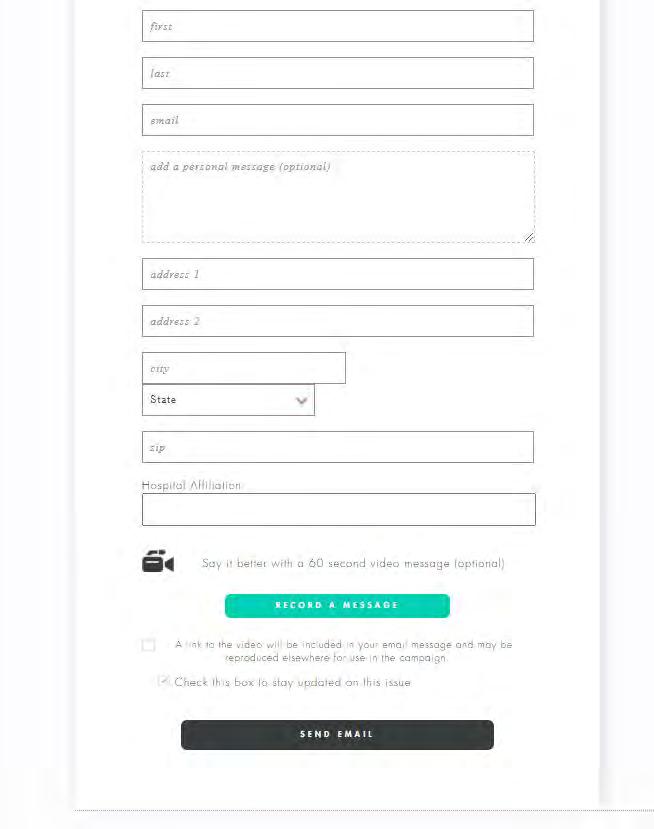

Dear Governor Hogan,
On behalf of my hospital and our employees, I write to urge you to support the Maryland Hospital Association’s (MHA) ask for the creation of a one-time $96 million fund to support critical workforce needs in hospitals across the state.

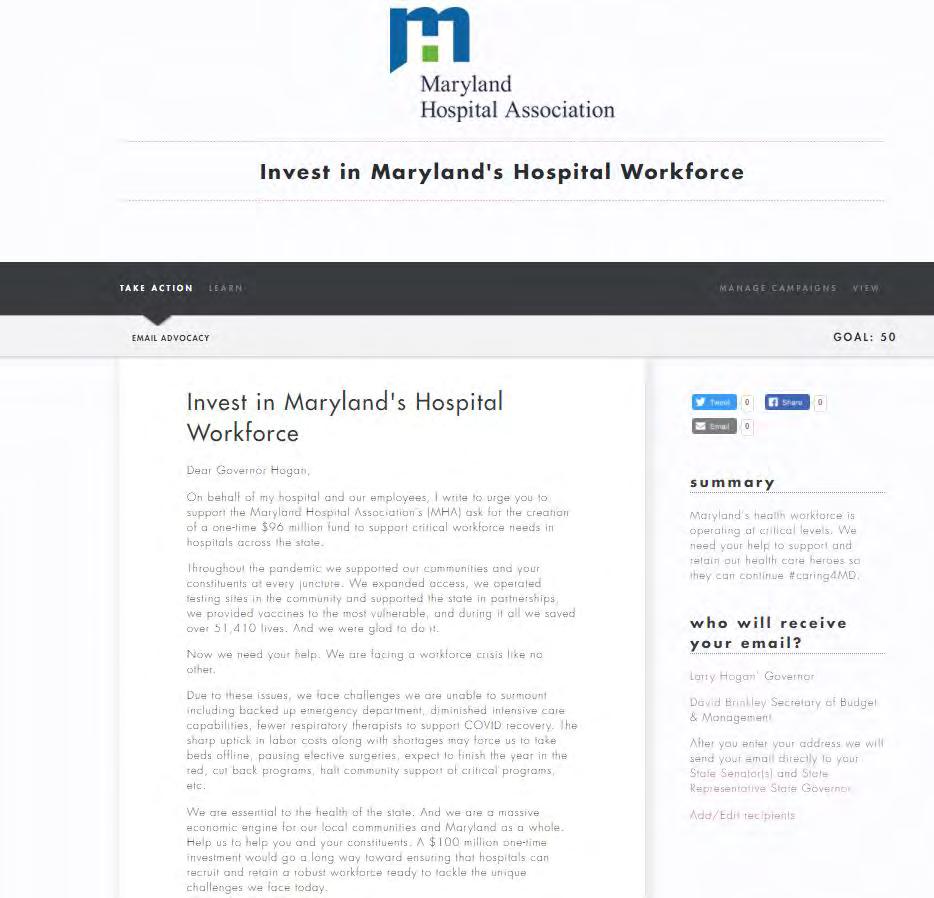
Throughout the pandemic we supported our communities and your constituents at every juncture. We expanded access, we operated testing sites in the community and supported the state in partnerships, we provided vaccines to the most vulnerable, and during it all we saved over 51,410 lives. And we were glad to do it.
Now we need your help. We are facing a workforce crisis like no other. Due to these issues, we face challenges we are unable to surmount including backed up emergency department, diminished intensive care capabilities, fewer respiratory therapists to support COVID recovery. The sharp uptick in labor costs along with shortages may force us to take beds o ine, pausing elective surgeries, expect to nish the year in the red, cut back programs, halt community support of critical programs, etc.
We are essential to the health of the state. And we are a massive economic engine for our local communities and Maryland as a whole. Help us to help you and your constituents. A $100 million one-time investment would go a long way toward ensuring that hospitals can recruit and retain a robust workforce ready to tackle the unique challenges we face today.
Sincerely,
CEO/President NameOrganization Name
Using the online platform Ujoin, advocates will have access to templated letters you can easily send to key legislators.
While the 2023 session will be in person, we expect there will be both in person and virtual opportunities to testify. Legislative leaders are committed to give the public as much notice as possible about bill hearing and committee schedules.
Please be sure to visit the Maryland General Assembly website for the latest information. MHA or your hospital government a airs lead can also assist you as needed.
Marylanders can also watch the committee hearings online. To watch, go to mgaleg.maryland.gov, then scroll down to “Today’s Calendar.”
Click on “Committee Meetings” for either the House or the Senate, and then click on the appropriate committee. Next to the name of the hearing, click on the camera icon and the hearing video feed should appear.
When setting up a meeting, decide with the person you are meeting with what the best technology is:
• Zoom?
• Conference Call?
• Who will set-up the meeting?
Utilize these quick tips to make sure that your virtual meeting runs smoothly.

Technology: If you are asked to join a meeting or are setting one up, be sure to test the platform in advance. Test your microphone and video before the meeting and ensure you downloaded the latest version of your meeting platform.
Visibility: Watch the position of your camera/laptop/mobile device. Use books or other items to prop it up if helpful. If you have a window or a bright light in the room, they should be in front of you or to the side. Backlighting will darken your screen.
Etiquette: Make sure you know how to mute and unmute your microphone. Mute your microphone when you are not speaking. Unmute and look into the camera when you are talking.
Attire: Try to avoid distracting attire on a video call—solid colors work best. Even though you are at home, dress the part.
Don’t be afraid to speak up and ask your questions! Remember, things happen. We have all done 10 microphone checks before the call, then the microphone doesn’t work on the 11th. Kids, pets, and even spouses are often unpredictable—it happens to everybody.


Engage your social connections by making them aware of resources and activities organized by and for your hospital, as well as upcoming issues and legislation. Sharing text, pictures, videos, live streams, website links, events, live coverage, and other content can help get the word out about the good work your hospital is involved in and issues that impact your community.
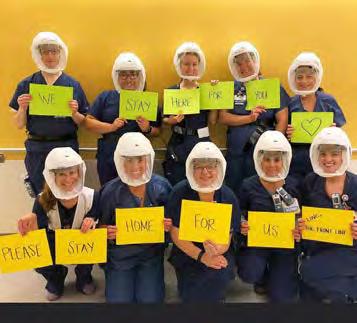



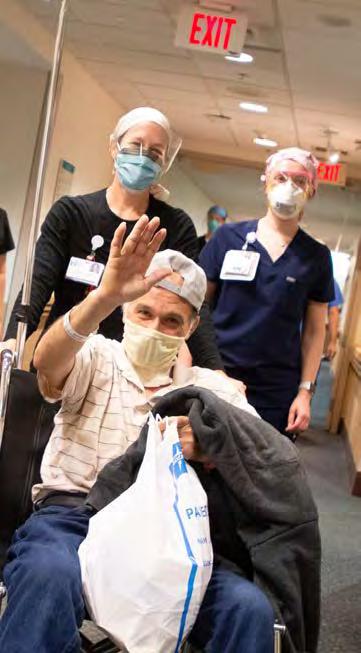
Engage with policymakers and organizations: Follow your local legislators on social media. Like, share, and engage in their posts and tweets.
Use the ‘tag’ feature to link your tweet to their pro le. This feature is useful for shoutouts, thank yous, calls-to-action and otherwise noting speci c users or organizations in your message. Note: to ‘tag’, type ‘@’ followed by the username.
Use visuals:
People remember visual information six times better than information that they have read. Photos, graphics, videos, and visuals garner 200% more shares than posts without them.
Use hashtags:
Following along with trending hashtags can keep you both in the loop and a part of the conversation. MHA utilizes the hashtag #Caring4Md for related campaign posts. #MDGA23 is often used throughout the 2023 session.

Be conscious of timing:
Did you know time of day matters? See a reference below on the best times to post per platform.
On Facebook:
• Early afternoon to get the most shares
• Midafternoon to get the most clicks
• Peak days are Thursday and Friday
• Anytime between 9 a.m. and 7 p.m. is good to post for engagement purposes
On Twitter:
• Early morning is when tweets generally receive the most clicks
• Evenings and late at night are the times when tweets receive the most favorites and retweets, on average
• The most convenient and popular times to tweet during the day are not necessarily the best times to tweet for engagement
• Twitter engagement is generally higher on weekends
Maryland Hospitals spent a combined $1.95 billion in community bene t, in scal year 2021, to expand access to care, food, housing and transportation in our communities.
Submit Your Story or
to
Blog: MHA will periodically initiate calls for story contributions from hospitals, providers, and patients. To submit a story, please send it to mha@mhaonline.org
If you are sharing stories via social media, please include the hashtag #Caring4Md and tag your local hospital in your post.
How to follow MHA
Follow Maryland Hospital Association’s Twitter account @mhaonline twitter.com/mhaonline
Like and follow @MarylandHospitalAssociation on Facebook facebook.com/MarylandHospitalAssociation
LinkedIn and YouTube @Maryland Hospital Association
Be sure to include the hashtag for this session,#MDGA23, when referencing legislative issues. The posts below are samples utilizing the #Caring4Md and #MDGA23 hashtags
Maryland hospitals are bringing care into your home. During the COVID-19 crisis and beyond, telehealth has delivered much-needed health care for Maryland communities. We are #Caring4Md.
Maryland frontline workers are putting patients rst. <Tag Name> at <Tag Hospital> is one of the dedicated frontline nurses #Caring4Md’s patients and families.
Our hospitals have been on the frontlines for almost XXX days. Maryland’s legislature has 90 days to enact policy that brings much-needed relief. They’ve been there for us, please be there for them. #MDGA23 #Caring4Md
Hospitals are among Maryland’s largest employers— directly employing 109,549 people, most who live in the communities they ser ve, and supporting 117,721 related jobs—producing $34.89 billion of yearly economic impact.
January 11 GENERAL ASSEMBLY CONVENES (noon, Wednesday) Swearing in of Members
18
Inauguration of the Governor and Lieutenant Governor (Wednesday)
20 10th Day – SENATE AND HOUSE BILL REQUEST GUARANTEE DATE
20
20
10th Day - Final date for Governor to introduce budget bill and capital budget bill
10th Day - Final date for submissions for Executive Orders reorganizing the Executive Branch of the State Government; either Chamber may disapprove by resolution within 50 days.
23 13th Day – Administration bills introduced in the Senate after this date referred to Senate Rules Committee.
TBD Election of the State Treasurer
TBD Governor delivers State of the State address (noon)
February 6 27th Day –
SENATE BILL INTRODUCTION DATE Senate bills introduced after this date referred to the Senate Rules Committee
9 In order to meet the bill introduction date, House bills must be led with the Chief Clerk’s o ce by 5 P.M.
10 31st Day –
HOUSE BILL INTRODUCTION DATE
bills introduced after this date referred to the House Rules and Executive Nominations Committee
19 40th Day – “Green Bag” appointments submitted by Governor (Delivered on Friday, February 17)
March 6 55th Day – Final date for introduction of bills without suspension of rules
14 63rd Day – Committee Reporting Courtesy Date
Each Chamber’s committees to report their own bills by this date
20 69th Day – Opposite Chamber Bill Crossover Date
Each Chamber to send to other Chamber those bills it intends to pass favorably
Opposite Chamber bills received after this date subject to referral to Rules Committees
April 3 83rd Day – Budget bill to be passed by both Chambers
10 90th Day – ADJOURNMENT “SINE DIE” (Monday)
mhaonline.org/about-mha/member-hospitals

hospital an even greater part of your community while learning about public policy and how it impacts hospitals and our health.
Ready to help make a di erence? Contact the MHA Government A airs sta for support:
Nicole Stallings Executive Vice President & Chief External A airs O cer nstallings@mhaonline.org


Erin Dorrien Vice President, Policy edorrien@mhaonline.org
Jane Krienke Senior Analyst, Government A airs jkrienke@mhaonline.org

Brian Frazee Vice President, Government A airs bfrazee@mhaonline.org
Brian Sims Vice President, Quality & Equity bsims@mhaonline.org


Learn more on our website: mhaonline.org
MHA Advocacy Toolkit © Maryland Hospital Association 2023